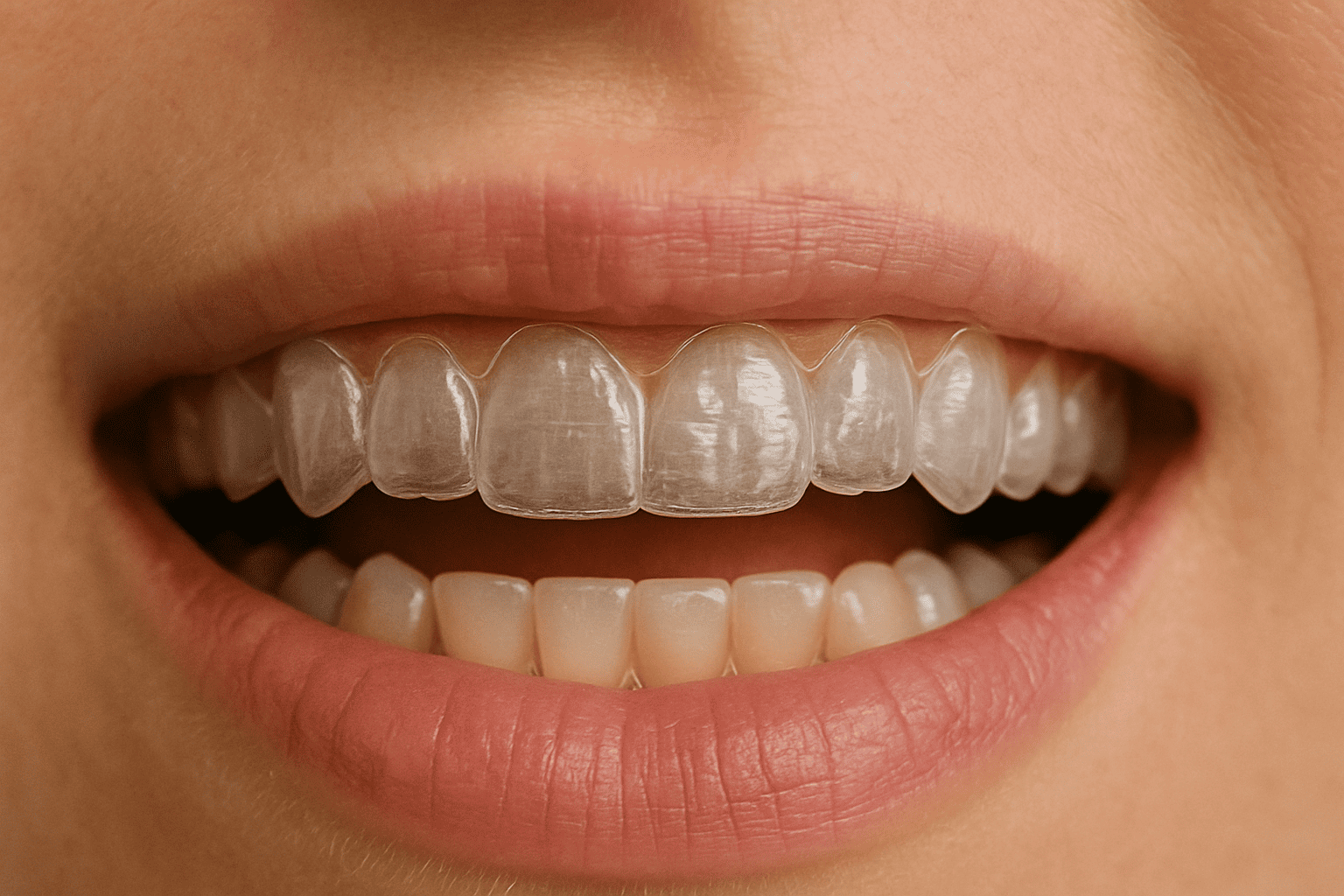Composite Bonding: Full Guide For a Perfect Smile
Want a quick smile fix? Composite bonding is an affordable, gentle way to repair chips, gaps, or stains, giving you a confident, natural-looking smile in just one visit.

Composite bonding is a popular dental treatment in the UK, known for being affordable, quick, and gentle on your teeth. Many people, especially younger ones inspired by social media’s focus on perfect smiles, choose it to improve the look and function of their teeth. This blog explains composite bonding in simple terms, covering what it is, how it’s done, what it can fix, its benefits, downsides, care tips, and if it’s right for you, all while providing clear, trustworthy information for UK readers wanting a confident smile.
What is Composite Bonding?
Composite bonding, also called dental bonding or teeth bonding, is a dental procedure that uses a tooth-coloured composite resin, a material combining plastic and fine glass particles, to improve the appearance and function of teeth. Scientifically, the resin is a biocompatible polymer that mimics the natural color and texture of enamel, making it ideal for addressing minor imperfections, such as chips, cracks, gaps, tetracycline stains (discoloration caused by certain medications), or slightly misaligned teeth. It also helps with practical needs, like filling cavities, replacing old silver fillings, or protecting tooth roots exposed by receding gums.
Unlike veneers or crowns, which may require significant tooth removal, bonding is gentle, preserves your natural teeth, and can be undone. This makes it a top choice for people who want a great smile.
How Does Composite Bonding Work?
Composite bonding is a quick, one-visit procedure, typically completed in 30-60 minutes per tooth without the need for numbing injections, making it ideal for people seeking fast results. The process relies on precise chemical and physical interactions between the resin and the tooth’s surface. Here’s how it works:
- Colour Selection: The dentist picks a resin shade to match your natural teeth, using a shade guide to ensure a seamless blend, critical for aesthetic outcomes.
- Tooth Preparation: The tooth’s enamel is lightly etched with a mild acid (typically phosphoric acid) to create a slightly rough surface. A conditioning liquid, often a bonding agent, is applied to enhance adhesion by forming a micromechanical bond between the resin and enamel.
- Resin Application: The soft, putty-like resin is applied and carefully shaped to correct imperfections like gaps or chips, leveraging its moldable properties before hardening.
- Hardening: A curing light (UV or blue LED) triggers a photochemical reaction, polymerising the resin to form a hard, durable layer bonded to the tooth.
- Polishing: The dentist refines the shape to ensure a comfortable bite and polishes the resin to match the enamel’s natural sheen, enhancing both aesthetics and function.

Applications of Composite Bonding
Composite bonding is a versatile treatment that fixes both how your teeth look and how they work, making it popular in places where a beautiful smile matters.
For Looks
- Fixing Chips, Cracks, or Breaks: Repairs damaged teeth, common in areas where appearance is important.
- Closing Gaps: Fills spaces between teeth, a common request for a better smile.
- Covering Stains or Tetracycline Marks: Hides tough stains that whitening can’t fix, leveraging the resin’s opacity.
- Shaping Teeth: Makes teeth look longer or more even, great for small changes.
- Straightening Slightly Crooked Teeth: Fixes minor alignment issues without braces.
For Function
- Filling Cavities: Uses resin instead of silver fillings, blending with your teeth for a natural look.
- Replacing Silver Fillings: Update old fillings to match your teeth more closely.
- Protecting Exposed Roots: Covers roots exposed by gum recession, reduces sensitivity, and protects against decay.

Benefits of Composite Bonding
Composite bonding has several benefits, making it an excellent choice for UK dental patients:
- Affordable: It’s cheaper than veneers or crowns, suitable for those watching their budget.
- Quick: Done in one visit, perfect for busy people or those wanting fast smile fixes.
- Gentle and Reversible: Keeps your natural teeth safe and can be removed, unlike veneers or crowns, which many UK patients prefer.
- Versatile: Fixes both looks and function, with the resin’s ability to bond securely to enamel and dentin ensuring reliable outcomes at specialist UK clinics.
- Great Results: Clinics with digital smile previews, common in cities like London, use imaging to show you the results, making patients more confident.
Insight: Bonding’s temporary nature, due to the resin’s moderate durability, makes it ideal for minor fixes, great for people who want a quick smile upgrade without big procedures.
Limitations and Considerations
Composite bonding has some downsides to know about, due to the resin’s material properties and clinical constraints:
- Durability: Lasts 4-8 years with good care, shorter than ceramic crowns (10-15 years) due to the resin’s lower hardness compared to enamel or zirconia. It typically comes with a 1-year warranty, compared to 5-10 years for crowns, which is particularly important for people who grind their teeth.
- Risks: The resin is susceptible to staining from substances like wine, coffee, or tobacco, as its polymer matrix can absorb pigments. It may chip under mechanical stress (e.g., biting nuts or grinding) or detach due to bond failure, in which case some repairs may require an additional fee.
- Who It’s For: Not good for heavy teeth grinders, badly damaged teeth, major alignment issues, or large fillings, as the resin isn’t strong enough for high-pressure areas. Healthy gums are needed, as gum disease can weaken the bond or worsen recession.
- Whitening First: Teeth must be whitened before bonding, as the resin’s colour is fixed post-curing, a step some people miss, causing colour mismatches.
- Other Options: Zirconium crowns, with greater compressive strength, are better for grinders.
Aftercare for Lasting Results
Taking care of your bonded teeth keeps them looking good and working well:
- Right After: Avoid staining foods or drinks like tea, coffee, or tobacco for 48 hours, as the resin’s surface is most vulnerable to pigment absorption initially.
- Daily Care: Brush and floss your teeth every day to prevent plaque buildup, which can damage the bond. Yearly dental check-ups check the resin’s condition, and avoiding hard foods (like nuts) or habits like nail-biting reduces stress on the resin.
- Gum Health: Address gum problems before bonding, as inflammation can weaken adhesion and impact appearance, a crucial consideration for UK patients.
- Whitening Tip: Whiten teeth before bonding to match colours, avoiding a common mistake that impacts the look.
Infographic Idea: Make an easy checklist infographic for aftercare, giving clear tips to keep your smile bright and help readers stay engaged.
Composite Bonding vs. Composite Veneers
Composite bonding and composite veneers are essentially the same treatment, both utilizing the same resin, a biocompatible polymer that combines plastic and fine glass particles, to improve the appearance of teeth. The difference lies in how the resin is applied. Bonding addresses minor, specific issues, such as chips or gaps, by applying resin to targeted areas, often for both aesthetic and functional purposes (e.g., fillings). Composite veneers use the same resin to cover the entire front of a tooth, focusing on a full smile makeover for issues such as shape or color.
Unlike composite veneers, which are applied directly onto the tooth without preparation, porcelain veneers require some tooth adjustment and are fabricated in a dental lab. Porcelain veneers require drilling of the tooth surface to gently reduce the tooth to make space for ceramic.

Is Composite Bonding Right for You?
Composite bonding is ideal for people with minor issues such as chips, gaps, or stains, or for those with practical needs like fillings or root protection, particularly in cities like London. It’s not right for:
- Heavy teeth grinders who need stronger crowns.
- Major alignment or badly damaged teeth, needing braces or surgery.
- People with untreated gum problems which must be fixed first.
Tips for Choosing
- Pick Top Dentists: Choose cosmetic dentists with special training for the best results, as top clinics often have happier patients.
Conclusion
Composite bonding is an effective, affordable, and quick way to improve your smile, popular across the UK. Its gentle approach, relying on the chemical bonding of resin to enamel, makes it ideal for small fixes, but good care and choosing a skilled dentist are key to lasting results. With high patient satisfaction at top clinics and easy payment plans, bonding is helping people smile confidently. Share your smile goals or questions in the comments, or contact a local dentist to start your journey.






